Our top choices for the best shoes for corns and calluses:
- Neutral: Brooks Glycerin 22 — the most cushioned neutral running shoe of Brooks. It has a plush interior that provides a snug, breathable, and soft locked-in fit that surrounds the foot with comfort.
- Support: Brooks Adrenaline GTS 25 — a support shoe with plenty of cushioning, energy return, stability, and comfort even for longer runs.
Corns and calluses develop when the skin responds to repeated friction or pressure, often caused by ill-fitting footwear. They are the body’s natural way of protecting the underlying tissue. While generally not serious for individuals in good health, they can cause discomfort or pain while walking. Complications may arise if the skin becomes damaged, creating an entry point for bacteria and increasing the risk of infection.
For individuals with diabetes, corns can pose a greater risk due to reduced circulation and decreased nerve sensitivity, which can delay healing and increase the chance of complications. Foot deformities like bunions and hammertoes also raise the risk, as they create pressure points that make the skin more vulnerable to irritation.
Choosing proper footwear is essential. Bunion-friendly shoes should have wide toe boxes, while those with hammertoes benefit from firm soles and soft, flexible uppers. The key to managing corns is early prevention. Addressing friction and pressure before corns develop is more effective, and less painful, than treating them after the damage is done.
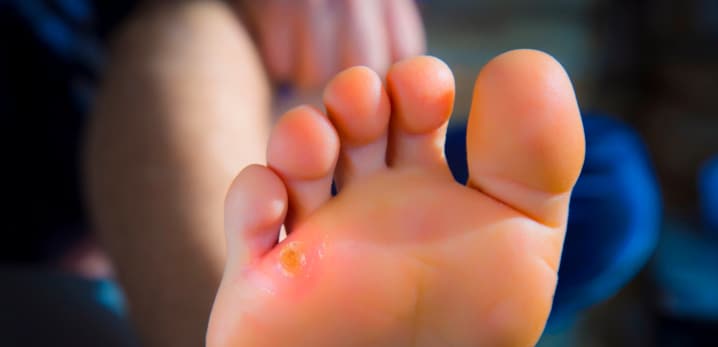
Importance of Proper Footwear
Proper footwear plays a critical role in maintaining foot health. Supportive, well-cushioned, and stable shoes help prevent common issues such as blisters, bunions, and joint discomfort. A well-fitted pair allows your feet to move naturally, promotes even weight distribution, and reduces the risk of strain or injury during daily activities.
Choosing shoes designed for specific activities, whether walking, running, or standing for long periods, can significantly improve comfort and performance. Replacing worn-out footwear when it no longer provides adequate support is essential to avoid long-term foot problems.
What are the best shoes for corns?
The best shoes for corns provide ample cushioning, effective shock absorption, and reliable arch support to reduce pressure on sensitive areas. They should promote smooth heel-to-toe transitions for a more comfortable stride, offer a spacious toe box to prevent crowding, and feature a breathable upper to maintain a cool, dry environment. The goal is to minimize friction and pressure while supporting natural foot movement throughout the day.
The Best Shoes for Corns and Calluses
The best shoes prevent corns and calluses. Here are 10 comfortable shoes to try:
New Balance 990v6: Classic Style, Perfected
A staple in the heritage running lineup, the New Balance 990v6 maintains its legendary status with a blend of classic craftsmanship and modern performance tech. This iteration elevates comfort with maximum cushioning, featuring a dual-density midsole that now integrates FuelCell foam, a nitrogen-infused compound engineered to deliver high-rebound, propulsive energy return mile after mile. Whether you’re logging steady-paced runs or just cruising through your day, the 990v6 brings a lively underfoot feel that wasn’t present in earlier versions.
The upper is constructed from a premium blend of breathable mesh and pigskin suede leather, offering not only enhanced airflow but also a snug, structured fit that adapts to foot movement. Unlike synthetic-only builds, this material combo hugs the foot more naturally and delivers superior durability and step-in comfort.
With a 12 mm heel-to-toe drop, the shoe provides a traditional geometry that reduces strain on the Achilles tendon and calf, ideal for runners seeking a smooth, familiar ride without the aggressive pitch of lower-drop models. It’s also a subtle nod to those transitioning between running and lifestyle footwear, as the platform feels as comfortable during casual wear as it does on pavement.
Brooks Ghost 17: Reliable Comfort and Support
The Brooks Ghost 17 continues to raise the bar in neutral running comfort, earning its reputation as one of the brand’s most versatile and cushioned daily trainers. Designed with an engineered air mesh upper, the shoe offers enhanced breathability and structure, allowing it to gently contour around the foot for a secure, adaptive fit without sacrificing airflow. Subtle overlays and a padded heel collar help lock the foot in place during transitions, minimizing slippage on both short jogs and long-distance efforts.
What sets the Ghost 17 apart is its full-length DNA LOFT v3 midsole, a nitrogen-infused foam compound that strikes a near-perfect balance between plushness and responsiveness. This proprietary cushioning system is lighter and more resilient than its predecessor, absorbing impact during heel strike while preserving energy return through toe-off. The ride is exceptionally smooth, thanks to the seamless integration of the midsole with the outsole geometry, which encourages a natural rolling motion through the gait cycle.
The heel-to-toe drop has been slightly adjusted in this latest version, dropping from 12 mm to 10 mm, which offers a more grounded feel and encourages a slightly more efficient stride pattern for many runners without abandoning the familiar comfort that longtime Ghost fans appreciate.
Brooks Glycerin 22: Max Cushioning for a Soft, Smooth Ride
If you’re dealing with corns, calluses, or just sensitive feet that crave top-tier comfort, the Brooks Glycerin 22 is an excellent choice, arguably the plushest offering in Brooks’ neutral lineup. Its defining feature is the full-length nitrogen-infused DNA Tuned midsole, engineered for maximum softness and shock attenuation. This ultra-cushioned platform reduces repetitive ground impact, which is a key contributor to pressure buildup, the very friction that often leads to corns and calluses, particularly under the forefoot and toes.
The 10 mm heel-to-toe drop ensures a gentle incline that alleviates excess strain on the Achilles, calf, and midfoot, while encouraging a smooth, rolling stride. What sets the Glycerin 22 apart is its widened sole platform under the forefoot, which improves lateral stability and helps distribute pressure more evenly across the metatarsal heads. For runners or walkers prone to hot spots, this subtle structural support can make a big difference in preventing hardened skin buildup.
Up top, the shoe features a reengineered mesh upper with an ultra-soft lining and a stretch-fit design that adapts to the natural swelling of your feet throughout the day. This helps prevent skin irritation and pressure points, especially around the toes, common trouble spots for corns. The roomy toe box further allows the toes to splay naturally, reducing crowding and friction that might otherwise aggravate callused areas.
Finally, the shoe’s plush internal bootie construction offers a secure, locked-in fit without being constrictive. It’s ideal for runners who want their foot held firmly in place without pressure seams or rigid overlays pressing into sensitive skin.
If you’re looking for stability without sacrificing softness, the Brooks Glycerin GTS 22 delivers in spades. As the stability counterpart to the neutral Glycerin 22, this model incorporates Brooks’ innovative GuideRails holistic support system, a technology designed to reduce excess heel and tibial rotation, thereby keeping your foot, knee, and hip in a more efficient alignment throughout your gait cycle. For individuals with corns or calluses, this controlled alignment minimizes lateral foot motion that can lead to friction, pressure points, and skin irritation, especially during long runs or walks.
Hoka Bondi 9: Extra Cushion, Zero Compromise
The Hoka Bondi 9 stands as the brand’s most heavily cushioned neutral trainer, purpose-built for maximum comfort across long miles. Designed with a broad, stable platform and an ultra-thick stack of compression-molded EVA foam, it delivers exceptional shock absorption particularly beneficial for runners dealing with corns and calluses. Why? Because reduced ground impact means less pressure and friction on sensitive areas of the foot, which are often exacerbated by repetitive pounding or poorly fitted shoes.
Its 4 mm heel-to-toe drop encourages a more balanced stride while minimizing load on the forefoot, key when you’re trying to prevent flare-ups in areas already prone to skin thickening or irritation. The dual-layer engineered mesh upper is breathable yet supportive, minimizing hotspots by allowing air circulation while conforming gently to the foot’s shape. Internally, a plush and smooth lining reduces abrasive contact, which can aggravate corns or callused areas.
Stabilizing design elements subtly guide the foot without feeling restrictive, which can help limit excessive shear forces, one of the main culprits behind skin irritation and callus buildup. Compared to previous Bondi models, the 9 offers improved transition through the gait cycle, a lighter overall weight, and a more secure, locked-in fit, so you’re not sliding around inside the shoe, which could worsen friction-related skin conditions.
Another top-tier choice in Hoka’s lineup is the Clifton 10, often hailed as the brand’s go-to daily trainer for good reason. This max-cushioned shoe strikes a careful balance between plush comfort and responsive stability, making it a standout not just for beginners but also for runners managing foot sensitivities like corns and calluses.
Brooks Adrenaline GTS 25: Reliable Comfort, Gentle Support
The Brooks Adrenaline GTS 25 continues its reign as one of the most trusted stability running shoes on the market, thanks to its finely tuned blend of cushioning, support, and all-day comfort. Tailored for runners who crave structure without stiffness, this model offers particular relief for those managing corns and calluses, conditions often triggered or worsened by excessive pressure, repetitive friction, and poor foot alignment.
At the heart of the Adrenaline GTS 25 is Brooks’ nitrogen-infused DNA LOFT v3 midsole, a soft yet resilient foam engineered to deliver plush shock absorption without sacrificing responsiveness. This midsole technology disperses impact forces evenly across the foot, helping to reduce localized pressure on common callus zones like the ball of the foot or lateral heel. For runners with corns, this dampening effect minimizes harsh ground contact and limits the micro-trauma that can lead to skin thickening or inflammation.
Brooks’ signature GuideRails support system adds another layer of protection by gently guiding the foot into a natural motion path. By controlling excess movement, especially at the heel and ankle, the GuideRails help reduce the kind of lateral instability that can cause rubbing inside the shoe, a common trigger for both corns and calluses.
The engineered mesh upper is another standout: it’s soft against the skin, highly breathable, and reinforced in key zones to prevent material bunching or hotspots. Its targeted 3D Fit Print overlays offer structure without adding pressure, allowing the upper to wrap the foot securely while minimizing irritation over sensitive areas.
Although it shares a similarly cushioned feel with the neutral Ghost 16, the Adrenaline GTS 25 provides extra alignment assistance, making it an excellent option for runners who need mild to moderate stability, especially if they’re prone to foot conditions aggravated by biomechanical imbalances or high-friction footwear.
New Balance 840v5: Wide, Soft, and Supportive
The New Balance 840v5 is more than just a neutral running shoe; it’s an APMA-accepted (American Podiatric Medical Association) model specifically engineered to meet the needs of individuals requiring diabetic-friendly and orthotic-compatible footwear. Designed with a roomy, stable platform and a focus on minimizing pressure points, it’s an ideal option for runners or walkers dealing with corns, calluses, or sensitive skin conditions.
At its core, the 840v5 features a full-length ABZORB midsole, a proprietary New Balance foam that combines cushioning and compression resistance to absorb impact forces effectively. This midsole plays a crucial role in protecting pressure-prone areas of the foot by dispersing shock evenly across the sole, critical for preventing the buildup of calluses or further irritation of existing corns caused by high-impact zones under the forefoot or heel.
What sets the 840v5 apart for those with corns and calluses is its orthotic-friendly design. The shoe offers a spacious toe box and a straight last, which allows for a natural toe splay and accommodates a variety of foot shapes and custom orthotics without causing internal crowding, one of the common contributors to friction and pressure that lead to skin thickening. The removable insole makes it easy to insert prescription orthotics that provide targeted offloading of problem areas.
Its engineered mesh upper features a no-sew construction that eliminates unnecessary seams, reducing abrasive contact points that can irritate vulnerable skin. This smooth upper, combined with a padded tongue and collar, helps maintain a gentle fit around the entire foot, especially important for those with compromised skin integrity or heightened sensitivity.
The 840v5 also boasts a durable rubber outsole with a stable, full-ground contact design, which promotes balance and consistent foot placement, reducing the risk of instability-induced rubbing or pressure hotspots that can trigger corn and callus formation.
Altra Escalante 4: Zero-Drop Comfort
The Altra Escalante 4 is a standout in the zero-drop running category, offering a rare combination of balanced cushioning, anatomical design, and natural movement mechanics, all of which make it an excellent choice for runners dealing with corns and calluses. As a neutral daily trainer, it delivers comfort in spades while honoring the foot’s natural shape and function.
Built on Altra’s signature zero-drop platform (equal stack height from heel to forefoot), the Escalante 4 promotes a more natural gait cycle and encourages midfoot or forefoot striking. This can be particularly helpful for reducing repetitive heel impact, a known contributor to callus formation and plantar pressure hotspots. The 24 mm stack height of Altra EGO™ foam offers a soft yet energetic underfoot experience, delivering both impact attenuation and responsive rebound without the mushiness often associated with high-cushion shoes.
Where the Escalante 4 really shines for runners with corns and calluses is in its FootShape™ toe box. Unlike conventional tapered designs, this anatomical toe box gives your toes room to spread and align properly, reducing friction and pressure between digits, two common culprits behind the development of corns. It also reduces constriction over bony prominences like the fifth metatarsal head or bunion-prone areas, where calluses can develop due to tight, narrow shoes.
Inside the midsole, InnerFlex grid-like grooves enhance flexibility and allow the shoe to move fluidly with the foot, which minimizes resistance and potential shear forces during toe-off. Combined with FootPod technology, which maps the bones and tendons of the foot for a more organic ride, this promotes natural foot mechanics and reduces the strain that can lead to excessive hardening of the skin.
The engineered knit upper is breathable and adaptive, offering a sock-like fit without added bulk or rigid overlays, essential for preventing hotspots or friction points that could aggravate existing corns or calluses.
Mizuno Wave Rider 28: Soft Landings, Snappy Ride

The Mizuno Wave Rider 28 continues its legacy as the brand’s most iconic and best-selling neutral trainer, refined yet reliably consistent in its performance. With an updated design and advanced midsole innovation, it caters not only to daily mileage and long-distance runners but also to those managing foot sensitivities like corns and calluses, where pressure relief and friction reduction are key.
Up top, the engineered jacquard mesh upper delivers both breathability and precision fit. What makes it particularly effective for irritated or callused areas is its seamless construction and adaptive weave, which gently conforms to the shape of the foot without imposing rigid pressure over vulnerable zones like the toes, bunion areas, or dorsal forefoot. This helps minimize rubbing and reduces the risk of skin breakdown over time.
The midsole is where the Wave Rider 28 truly shines. It integrates Mizuno Enerzy NXT, a next-generation foam compound that enhances both cushioning and energy return without compromising responsiveness. The benefit for runners with corns or calluses? Enhanced shock attenuation means less repetitive impact transmitted through the foot, which reduces the mechanical stress that often contributes to callus buildup or irritation of corns, especially during heel strike or forefoot loading.
The signature Mizuno Wave Plate embedded within the midsole adds another dimension of biomechanical support. Designed to disperse shock laterally and encourage a more natural, efficient transition through the gait cycle, this technology helps prevent excessive foot motion that could otherwise create hotspots or friction points inside the shoe.
Fit-wise, the Wave Rider 28 is engineered for balance: snug in the heel and midfoot for security, yet roomy enough in the toe box to allow for natural toe splay. This is a key factor in reducing pressure-related skin issues, particularly between or around the toes, where corns tend to develop due to crowding or constriction.
Adidas Ultraboost Light: Soft, Bouncy Comfort
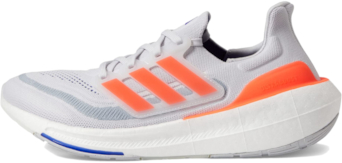
The Adidas Ultraboost Light, also known as the Ultraboost 23, is arguably the most comfortable iteration in the Ultraboost lineage, refined with subtle yet significant upgrades that make it both lighter and gentler on the foot. This latest version introduces the Ultraboost Light midsole, a revolutionary foam compound that’s approximately 30% lighter than traditional BOOST material while maintaining its hallmark responsiveness, cushioning, and durability.
For runners managing corns and calluses, this weight reduction is more than a numbers game, it translates to less vertical impact, reduced downward pressure, and a more forgiving underfoot feel. The foam’s high energy return also reduces fatigue over longer runs, which can help prevent compensatory gait mechanics that often increase friction or load in localized areas of the foot, especially those prone to callus or corn formation.
The upper features Adidas’ Primeknit+ FORGED technology, a single-piece, adaptive knit engineered for strategic stretch and support. This sock-like design eliminates traditional seams and overlays that often rub against the skin and exacerbate corns or pressure-related skin irritation. The knit flexes where your foot needs mobility and hugs more securely where stability is crucial, reducing internal slippage and in-shoe friction that can worsen hard skin buildup.
Additionally, the BOOST technology infused throughout the midsole offers multidirectional compression and rebound. This not only cushions each step but also disperses pressure evenly, minimizing high-stress contact points that can lead to or worsen calluses, particularly under the metatarsal heads or lateral edges of the foot.
Temperature regulation is another under-the-radar benefit. The midsole’s advanced cell structure is designed to maintain consistent cushioning across a range of temperatures, which helps prevent the stiffening or over-softening that can cause instability, foot shifting, and skin irritation during extended wear.
Nike React Infinity Run Flyknit 3: All-Day Comfort, Mile After Mile
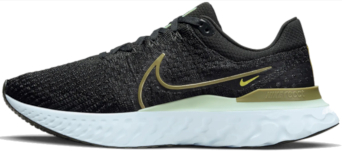
If you’ve been curious about Nike’s React foam and want to experience it in its most cushioned form, the Nike React Infinity Run Flyknit 3 is the model to try. Designed as a high-mileage, injury-prevention trainer, this shoe packs in the most React foam of any Nike running shoe, delivering a ride that’s plush, responsive, and built to endure.
For runners dealing with corns and calluses, the React Infinity Run Flyknit 3 offers several biomechanical advantages. The full-length React midsole provides consistent, soft cushioning that absorbs and disperses impact forces throughout the footstrike, reducing concentrated pressure on sensitive areas like the metatarsal heads and lateral forefoot. The foam’s high resilience also allows it to maintain its shape over time, offering long-term support without the breakdown that can lead to uneven foot loading or hot spots.
One of the key design features is its rocker geometry, which subtly propels the foot forward with a rolling motion from heel to toe. This helps minimize shear forces and limits prolonged contact with the ground, both of which are known contributors to friction-related skin issues like corns and calluses. The smoother transition reduces the amount of dragging or pushing off with the toes, which can also relieve stress in high-friction zones.
The Flyknit upper, now more extensive and refined than in previous iterations, wraps the foot in a breathable, adaptive knit. It molds comfortably around bony prominences and deformities without pressing into the skin, making it especially helpful for those with dorsal or lateral calluses or inter-toe corns. Its seamless, sock-like construction helps eliminate internal rubbing and irritation caused by traditional stitched overlays or rigid materials.
Stability is subtly embedded into the design with a wide midsole platform and flared sole geometry, which increases ground contact and reduces wobble. This added balance can prevent compensatory movement patterns that often shift load to smaller, more sensitive areas of the foot, common triggers for skin irritation or callus formation.
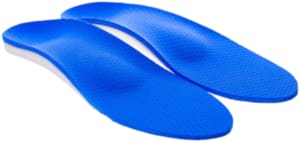
The Best Insoles for Corns and Calluses
Here’s a list of the best insoles for corns and calluses:
1. Powerstep Pinnacle Plus
2. Powerstep Original
3. Superfeet Premium Blue
4. Superfeet DMP Copper
5. Superfeet Premium Yellow
6. Superfeet Premium Black
7. Superfeet Premium Orange
8. Spenco Medics Diabetic Insole
9. Spenco RX Orthotic
10. Spenco RX Full Arch Cushion
How to Properly Fit Your Shoes
Measuring Your Feet
To measure your feet for proper footwear, follow these steps:
- Gather Materials: You need a ruler or tape measure, a piece of paper, and a pen.
- Prepare the Paper: Place the paper on a flat surface against a wall.
- Position Your Foot: Stand on the paper with your heel against the wall. Make sure your weight is evenly distributed on both feet.
- Mark Your Foot: Use the pen to mark the longest part of your foot on the paper. Repeat for the other foot, as they may differ in size.
- Measure Length: Use the ruler or tape measure to measure the distance from the wall to the mark for each foot. Record the measurements in inches.
- Measure Width: To measure width, wrap the tape measure around the widest part of your foot while standing. Note this measurement.
- Consult Size Charts: Use the length and width measurements to refer to the footwear brand’s size chart to find your correct shoe size.
Trying on Shoes
For the best fit, try on shoes at the end of the day, when your feet are slightly swollen and brutally honest about what they can and cannot tolerate. Morning feet are optimistic liars; evening feet tell the real story.
Adjusting for Comfort
When selecting footwear for comfort, consider the following:
- Fit: Make sure your shoes actually fit because guesswork is great for guessing cake flavors, not foot comfort. Measure your feet and try on shoes later in the day, when they may be a bit swollen from standing, walking, or long periods of sitting. Try to leave a space about a thumb’s width between your longest toe and the shoe’s tip if your toes are squished together like sardines, it’s definitely not a good choice. Your feet deserve room to breathe, not reenact a shoe-sized escape room.
- Arch Support: Pick shoes with arch support that matches your foot type, whether you’re rocking flat feet, neutral arches, or the majestic high arches. The right support helps keep your feet happy and your posture less tragic. And if you really want to treat your soles like royalty, toss in some custom insoles. It’s like memory foam for your foot drama.
- Cushioning: For ultimate comfort, cushioning takes the lead. Look for plush padding in the insole and midsole to soak up impact because your feet deserve better than feeling every crack in the sidewalk. Materials like EVA or memory foam work wonders, basically turning your shoes into mattresses for your soles. Bonus: no snoring involved.
- Width: Choose the right shoe width (narrow, regular, or wide) because your toes weren’t meant to live in cramped quarters. The goal is comfort, not a foot-sized escape room. Give those toes some breathing space so they don’t start staging a protest every time you take a step.
- Heel Height: Choose a heel height your feet can actually live with unless you enjoy walking like a baby giraffe. Lower heels are usually the MVPs for all-day comfort, letting you stand, stroll, or strut without plotting your next emergency sit-down. Your feet will thank you, and your balance will stop filing complaints.
- Material: Go for breathable materials that let your feet catch a breeze because nobody wants to walk around with a pair of personal saunas strapped to their soles. Materials that promote air circulation help maintain dryness and comfort, preventing a situation that resembles a sock-sweat disaster. Your feet will feel fresher, and so will your dignity.
- Sole Flexibility: Make sure your shoe has a flexible sole; your foot isn’t a robot, and your shoe shouldn’t be either. A flexible sole allows your foot to move naturally, transforming walking from a tedious task into a relaxed stroll toward snacks. Because stiff soles and comfort go together like socks and puddles: badly.
- Break-In Period: Don’t expect your new shoes to love you right away; they need a little “getting to know you” time. Be mindful of the break-in period and ease into them gradually, or risk turning your feet into blistered drama queens. Think of it as dating: don’t rush the relationship, and your shoes will eventually commit to your comfort.
- Try Before You Buy: Take those shoes for a test stroll before committing because if they hurt in the store, they won’t magically feel better when you’re halfway through the mall. Take a stroll, move your toes, and notice any areas of pressure or discomfort. If your feet are already complaining, that’s not a shoe; it’s a red flag in leather.
- Lifestyle Needs: Think about what you’ll actually be doing in those shoes, running a marathon, strolling through the park, or just pretending to exercise at brunch. Choose styles that match the mission. Running shoes for running, walking shoes for walking, and casual shoes for, well, looking effortlessly fabulous while doing absolutely nothing athletic. Your feet know the difference; trust them.
Heads up: As an Amazon Associate, we earn from qualifying purchases.
Frequently Asked Questions
What are the best types of shoes for preventing corns and calluses?
The best shoes for preventing corns and calluses feature wide toe boxes to reduce pressure and allow natural toe alignment, cushioned insoles for impact absorption, and soft, non-abrasive materials that minimize friction. Prioritizing comfort over narrow or restrictive styles helps protect the skin from irritation. Athletic and walking shoes are particularly effective, as they provide consistent support and cushioning suited for daily wear.
How do corns and calluses form on the feet?
Corns and calluses develop when the skin thickens in response to repeated friction or pressure. This is a natural protective reaction, often caused by tight or ill-fitting footwear, high heels, or activities that place excessive stress on the feet. Over time, the skin hardens in an effort to shield the underlying tissue, but this can lead to discomfort and reduced mobility if not addressed.
Can wearing the right shoes help alleviate foot pain caused by corns and calluses?
The right footwear can significantly reduce foot pain caused by corns and calluses. Supportive, well-cushioned shoes help relieve pressure on affected areas, allowing the skin to recover and preventing further irritation. Choosing appropriate shoes can lead to greater comfort, improved mobility, and reduced discomfort during daily activities.
How often should I replace shoes to prevent corns and calluses?
Shoes should be replaced regularly to maintain proper support and cushioning. Experts recommend changing them every 300 to 500 miles or approximately every 6 to 12 months, depending on usage. Worn-out shoes can lose their structural integrity, increasing the risk of foot issues such as corns, calluses, and blisters. Replacing footwear on schedule helps protect your feet and maintain overall comfort.
Are there specific brands known for making comfortable shoes for corns and calluses?
Several shoe brands are known for offering footwear designed to help manage and prevent corns and calluses. Brands such as New Balance, Brooks, ASICS, Clarks, and Birkenstock prioritize comfort, support, and proper fit. Their designs often include features like cushioned insoles, wide toe boxes, and soft, durable materials, reducing friction and pressure that can lead to skin irritation and discomfort. These options can help protect foot health while maintaining daily comfort.
(This content was created with the help of AI.)
You may also like:


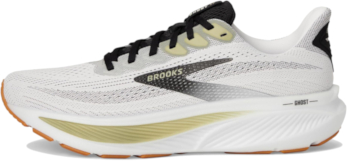
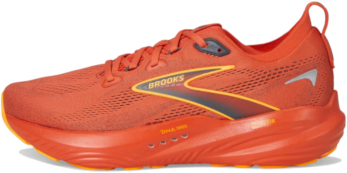
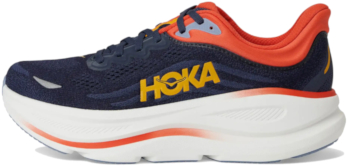
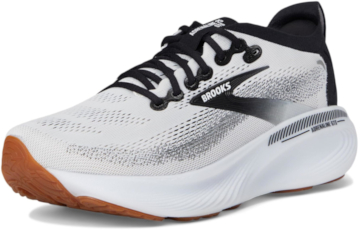
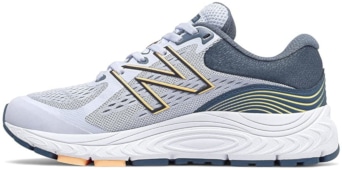
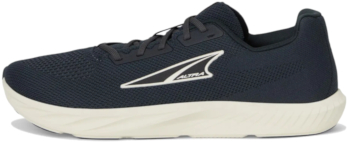
Where can I find these shoes? What store do they sell these shoes to?
Hi Makayla. The above list of shoes has clickable links that will take you directly to the product pages of online stores where you can buy them.